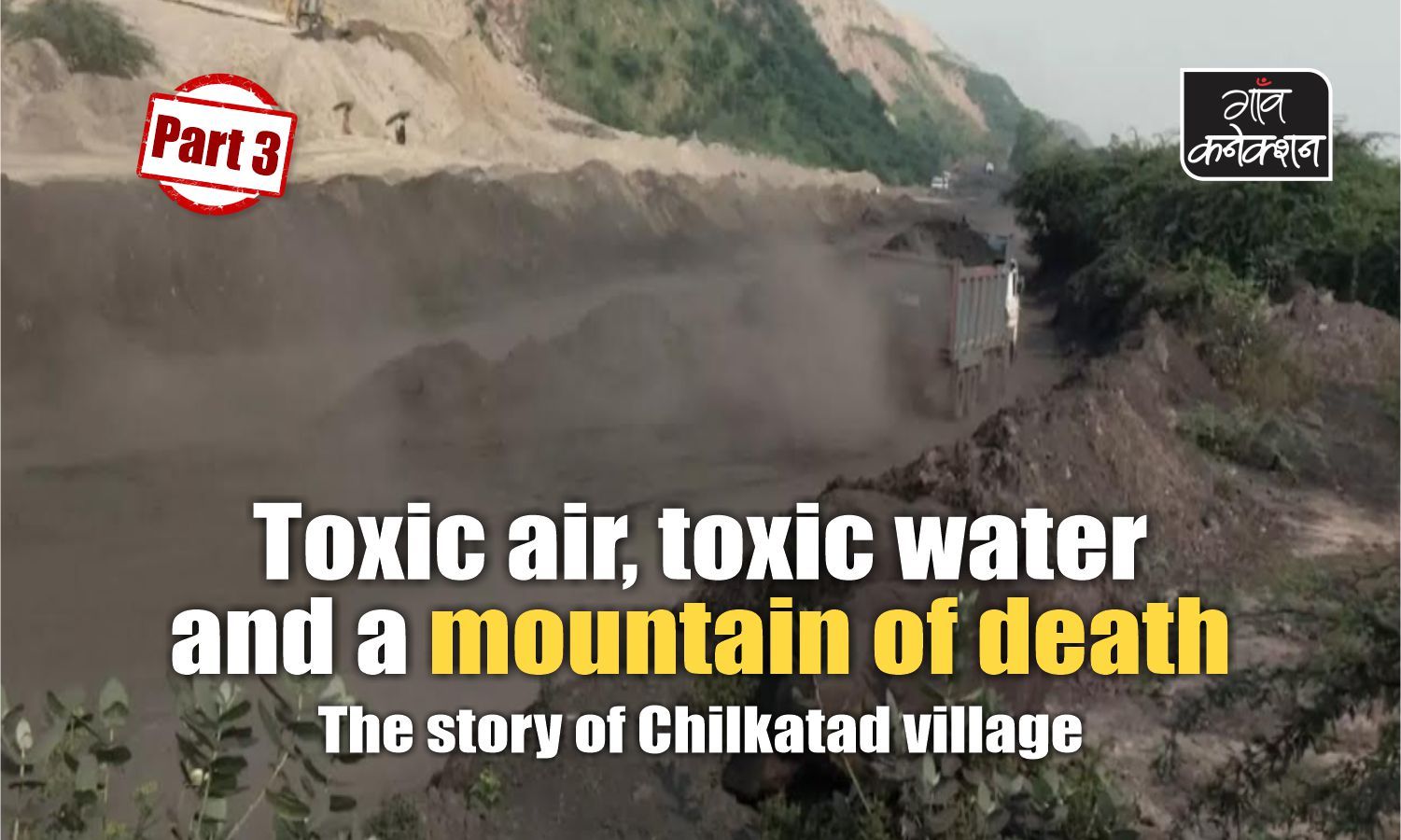“We live in the most polluted place in the country. There is a threat to our lives. They are producing electricity here. There are coal mines all around. What are we getting in return?” asks Chitrangan Giri, 28.
Giri, pursuing engineering in Bhopal, hails from Chilkatad village, in the Sonbhadra district of Uttar Pradesh, although, geographically, it falls in the Singrauli district of Madhya Pradesh. About 18,000 people living in this village are forced to breathe toxic air and they drink contaminated water.
That is the case with all the 269 villages in the Singrauli-Sonbhadra belt. People in these villages, including Chilkatad, suffer from memory loss, insomnia, irritation, fatigue, and fluorosis due to the pollution caused by coal mines.
“If you want to get a first-hand experience of the level of pollution here, just step out for a while,” said Giri. When I came back to my hotel after visiting the village, there was a black layer on my face, hands, feet and inside my nose and ears.
A study conducted in June 2018 by the All India Institute of Ayurveda (AIIA) over a 300 km area of Sonbhadra district found alarming levels of mercury in the hair and nails of villagers as well as in soil and plants. Soil was found contaminated wherever coal-fired power plants are operational with unsafe levels of cadmium, lead, arsenic, and nickel.
Flouting norms
In 1977, the NTPC (the erstwhile National Thermal Power Corporation) set up a plant in Shaktinagar in Sonbhadra. Displaced people were provided accommodation at Chilkatad village. The village was clean and green back then, but things changed after the Northern Coalfields Limited (NCL) was given permission for a coal mine. Trees were chopped and the mine came up just 50 metres from the village. As per norms, there shouldn’t be any residences in 700-metre vicinity of any coal plant, but 500 residences came up in Chilkatad village, just 50 metres away from the block.
When coal-laden trucks pass through the truck hall road – a corridor made for the passage of these vehicles – the area becomes dark due to fly ash flying in all directions.
A “mountain” adds to their woes
Adding to the woes of these villagers is the hundreds of feet tall “mountain”, or known in technical terms as overburden – it is the dump of mud dug up to coal mine.
This “mountain” collapsed in 2008 after heavy rains. The authorities swung into action and a survey was carried out.
The district magistrate, in a report, informed the top brass at NCL and NTPC that people living there were suffering from serious diseases because of the high level of pollution. He requested that the people be rehabilitated elsewhere. The NCL and NTPC had agreed to the proposal, but are yet to implement it.
Sayed Ghauri, the project manager at NCL, said: “The village was far from the block, but the villagers encroached upon the land near the mine, bringing them closer to the block. We have done all that we could from our end. We even planted trees so that they don’t suffer.”
The area where the coal block is situated looked green from a distance. But when we went closer, we realised that most of the trees were Babul that had grown on their own.
“The authorities at NCL had promised to plant trees worth Rs 2 crore. Where are they?” asked Giri.
“There was a plan to rehabilitate us”
Hira Lal, 35, of Chilkatad, said: “You can see for yourself the amount of coal present everywhere. People don’t hang clothes outside for drying. My three-year-old son suffers from asthma because of pollution. There was a plan to rehabilitate us in 2012, but now no one is bothered.”
Ravindra Yadav, the gram pradhan (village head) of Chilkatad, said: “The matter is stuck between the two companies. The authorities at the NCL said since the NTPC provided the villagers’ accommodation, we should talk to them. The authorities at NTPC said people are suffering because of NCL, so we should go to them with our problems.”
The mines have contaminated groundwater as well. A water treatment plant came up a few years back, but it’s non-functional. Ironically, this village receives electricity only for a few hours.
“There is a railway line on one end and at the other is the overburden. We are stuck in between. Most of the drains here are choked. People don’t have jobs. They are falling sick. We want to get out of this hell,” said Yadav.
Sixty-year-old Ramsubhag Shukla, who has been fighting for rehabilitation for a long time, said: “The NTPC accommodated us here in 1974-75. In 1981, the NCL coal mine came up. Things went downhill after that. Many politicians come here during elections, make fake promises and go away.” Rural Connection tried contacting the top brass at the NTPC, but the PRO, Aadesh Pandey, said: “The NCL authorities had promised to rehabilitate people. Why they haven’t done that is a question that should be posed to them.”



















